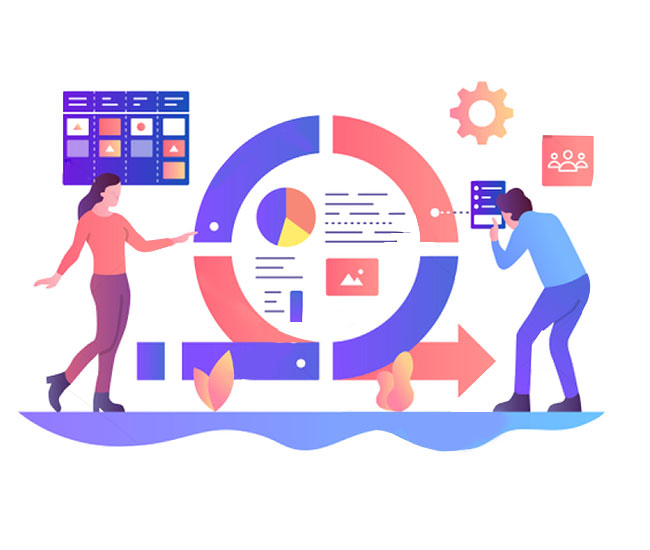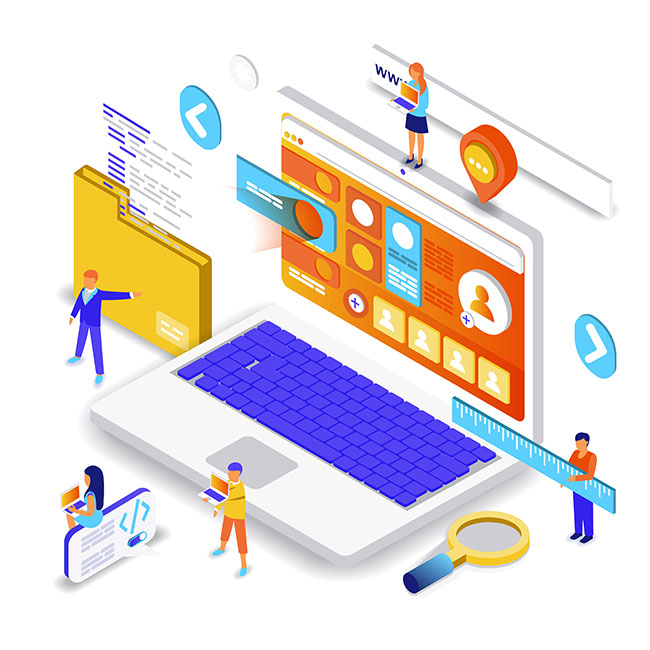"Muziris Softech provide full visibility of all the processes to our customers as we design, develop, test and deliver the product. The customers get to see the status of the latest version built and are developed in a strict, quality and secure environment. We promotes a set of engineering best practices intended to allow for rapid delivery of high-quality software product, and a business approach that aligns development with customer needs and company goals.
Muziris Softech uses agile software development methodologies to improve quality while reducing cost and time-to-market. We follow a set of software development methodologies based on iterative development, where requirements and solutions evolve through collaboration between self-organizing cross-functional teams.
As business organizations operate in a fast changing environment, where they have to meet customer needs quickly by introducing new products. New technologies are coming to market every other day, so if a product takes years to build, it sure will get outdated before it is being launched.
Our Agile process model allows our customers to launch a basic version of the product first, get feedback from their customers and then incrementally add new features based on that feed back. Agile methodologies take an iterative approach, thus requirements do not get freeze upfront. Our product development is carried out in iterations. Depending on business priority, the requirements or product features are developed and are assigned to release. The remaining features required for the project are put in as a wish-list to be included in the next version.


Scrum is the default process used at Muziris Softech. A custom-made process for a customer is usually a variant of Scrum. The requirements saved in the product backlog gets prioritized as features and those features may be described using user stories or use cases. The product backlog is never frozen. When customer suggests new requirements, the product owner at Muziris adds them to the backlog and prioritize it.
The product is developed on an iterative method in multiple sprints. Project Managers at Muziris decides the duration of a sprint based on the nature of the project. Typically a release follows a sprint, though a release can be made after multiple sprints. Each sprint will implement a set of features. A sprint backlog is created prior to the beginning of a sprint during the sprint planning meeting. The sprint backlog contains all the tasks that need to be done to implement the features included in that sprint. Once a sprint starts, the scope of the sprint cannot be changed by adding new features. This allows the our developers to complete a sprint without external interference. The project manager who act as scrum masters is responsible for making sure that the process is followed.
Muziris project managers uses project management tools that helps to implement agile process methodology and to drive results by giving us the flexibility to manage multiple projects and teams at one place. Along the Agile process, we get the accurate, up-to-date information about the project and we can insert & add any important information inside. Planning found to be easier, there will be always accurate information and real-time reports and analytics that saves our time and help us in analyzing the situation. The dashboard of project management tool helps us to handle different issues easily.
Project Management tools gives us the facility to create viable plans for development, plot the steps of the process, collaborate effectively and seamlessly, identify issues and resolve them on time prior to delivery. In the tool, everything is centralized, ensuring transparency and that everyone is on the same page; supporting the feedback and dialogues option with a customer. Thus, we are able to successfully continue with our process methodology.


Muziris Softech follow micro services pattern to develop the solutions. The solutions have clustered wide distributed processing and scalability capabilities. It supports internationalization, cloud enabled architecture and allow clients freedom of choice in the selection of database. The solution enables interoperability by compliance to Industry Standards, Practices and latest technologies. The system provides hardware and operating system independence, provides high performance real time platform, has a browser compatibility and responsive design, works based on open source software frameworks and libraries, has a technology agnostic, that is a pluggable architecture, it support for containerization, multiple language and multiple region. It supports for automated testing and audit logging also.
At Muziris, our quality assurance management team ensures that the right test types are run at the right time and as part of the right test level at the end of each sprint. We do write test cases are written before coding. This method have helped us to express the behavior of the system and helps in the early defect prevention, detection and removal of bugs.
The other commonly used agile testing methodologies used by our QA managers are acceptance Testing. Acceptance testing is based on communication between the customers, developers and testers and driven by pre-defined acceptance criteria and acceptance test cases. QA team also does behavior driven development, that is based on the expected behavior of the software being developed.
- Contributing to user stories based on the expected behavior of the system depicted as Test Cases
- Release Planning based on Test Effort and Defects
- Sprint Planning based on User Stories and Defects
- Sprint Execution with Continuous Testing
- Regression Testing after the completion of Sprint
- Reporting Test Results
- Automation Testing"
